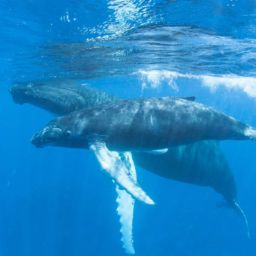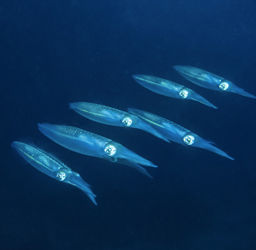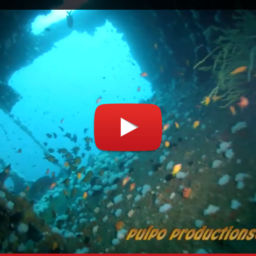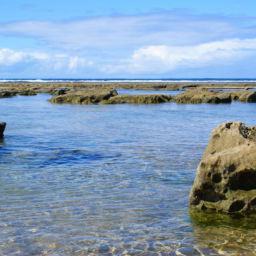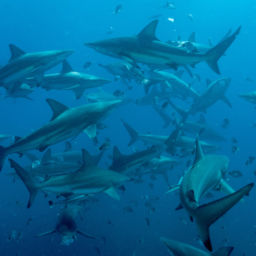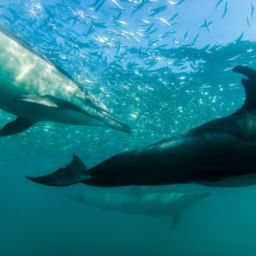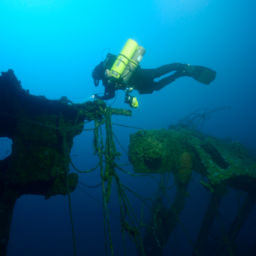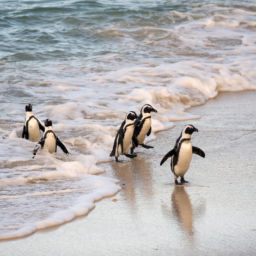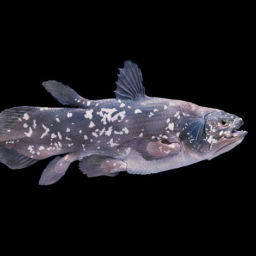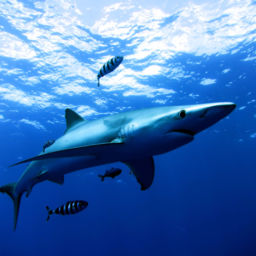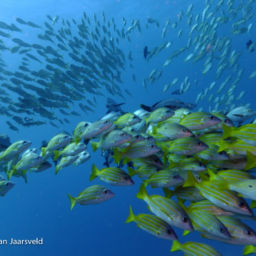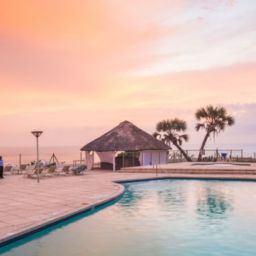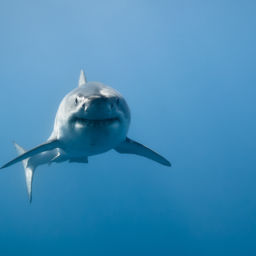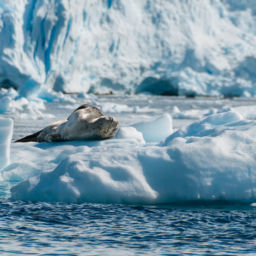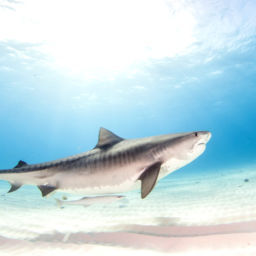This weekend, while walking on the beaches of South Africa’s Eastern Cape, I watched from the shore as hundreds of Cape gannets thronged in a dense cloud above the water. With perfect choreography, first one and then the next plunged from the sky and into the ocean, reappearing seconds later to resume their frenzied circling above the bay. Together the gannets were a spectacular sight, their slender forms dressed in gold by the late afternoon sunlight, creating a stark contrast against the first rosy hues of sunset. But their beauty was only part of the reason I was so glad to see them, for gannets are the harbingers of one of the greatest natural phenomena on Earth: the annual sardine run. Each year, dive charters all along South Africa’s eastern coast wait eagerly for the first signs of the annual event, which entails the mass movement of millions of sardines from the cool waters of the Western Cape north to KwaZulu-Natal and the Mozambican border. Featured in the BBC series Nature’s Great Events as well as The Blue Planet, the sardine run is comparable to the Serengeti’s wildebeest migration in terms of sheer biomass, and attracts divers from all over the world.
Exactly why and how the sardine run takes place is still a subject of some debate among experts. It is an unpredictable event that depends upon a delicate balance of simultaneous factors; while some years produce shoals of sardines so dense that they can be seen from the air, in other years the sardines do not run at all. It is certain that South Africa’s complex oceanography plays a key role, and that the opening up of a corridor of cool, inshore water along the country’s eastern coast between May and July is the main facilitator of the phenomenon. At this time of year, great shoals of sardines spawn in the frigid waters of the Agulhas Bank and then follow the cool current north. Sardines can only tolerate temperatures below 69 degrees Fahrenheit, and their presence in the typically warmer waters of South Africa’s east coast depends on the existence of the temporary cool-water corridor pushing from the south. Because the sardines are restricted to such a narrow channel by their inability to survive in warmer offshore water, they are effectively penned against the coastline by the millions.
The real stars of the show are not the sardines themselves, but the incredible number of predators that trail in their wake. The shoals make easy pickings, corralled into shallow water with no escape, a circumstance exploited by both resident and visiting predators. The two most important indicator species for the arrival of the sardine run are the Cape gannet and the common dolphin, both of which follow the migration in their multitudes. It is not unusual for the common dolphins that arrive on the South African coast in conjunction with the beginning of the run each year to travel in pods of over 1,000 individuals. Predators from the temperate waters to the south meet with those from the tropical waters of the north in a shared effort to gorge themselves on the sardines, creating a unique environment where penguins rub shoulders with sailfish. Similarly, pelagics are drawn inshore by the glut of readily available prey — tuna, oceanic blacktip sharks and dusky sharks are all common sights on the run. From orcas to great whites, from Cape fur seals to bronze whaler sharks, the possibilities for predator sightings on the trail of the sardines are endless. Perhaps the most impressive visitor of all is the Bryde’s whale, a 45-foot-long giant, capable of decimating entire bait balls in a single mouthful.
Incredibly, although any number of these predators can be present at a single bait ball, seabirds, sharks and dolphins all hunt with a synchronicity so perfect that there are few collisions or casualties. The feeding frenzy is a chaotic ballet, wherein each species performs its role with a deadly precision. Despite the hugely dynamic nature of the run, several operators offer divers the chance to witness it first hand, primarily from the coastal towns of Port St. Johns and East London. Sea conditions can be difficult; May through to July is winter in South Africa and divers should expect rough surface conditions and cold weather. Equally, the unpredictability of the sardine run means that it often takes many hours at sea to locate a bait ball. Once one has been found, entering the melee of frenzied predators is not for the faint-hearted, but those who do so will experience one of the most adrenaline-charged, high-octane spectacles in the underwater world, an unforgettable phenomenon comparable to no other. Challenging conditions notwithstanding, winter is actually a prime time for South African diving, thanks to good visibility caused by the prevalence of the west wind, and the annual humpback whale migration that coincides with the run.
There is some concern among experts that the sardine run may be under threat. Although 2011 was a record year for sardine run activity, in general the phenomenon has experienced something of a slump since the turn of the millennium. In 2003 and 2006, the sardines failed to run at all, something that happened only twice between 1980 and 2000. The commercial netting of sardines on South Africa’s west coast has been cited as a contributing factor to the decrease in activity, but the most serious threat to the run is thought to be global warming. The likelihood of inshore waters dropping below 69 degrees Fahrenheit decreases proportionately with the rise of global sea temperatures each year, and without that corridor of cool water, the sardines cannot complete their migration north. The loss of the sardine run would not only negatively impact South African tourism and the livelihoods of the local fishermen who depend upon the arrival of the fish each winter, but would also have severe ramifications throughout the marine ecosystem.
However, recent history has seen productive years as well, and divers who want to experience the sardine run for themselves still can. Because of the run’s unpredictability, choosing exactly when to travel to South Africa is difficult. Sometimes the best activity happens early in the season; other years it happens later on. The surest way to guarantee good sightings is to spend as long as possible in the area. Perhaps this year will be another record year; certainly, the early arrival of cooler weather and sightings of diving gannets like the ones I saw this weekend are signs that the sardines are already on their way.


